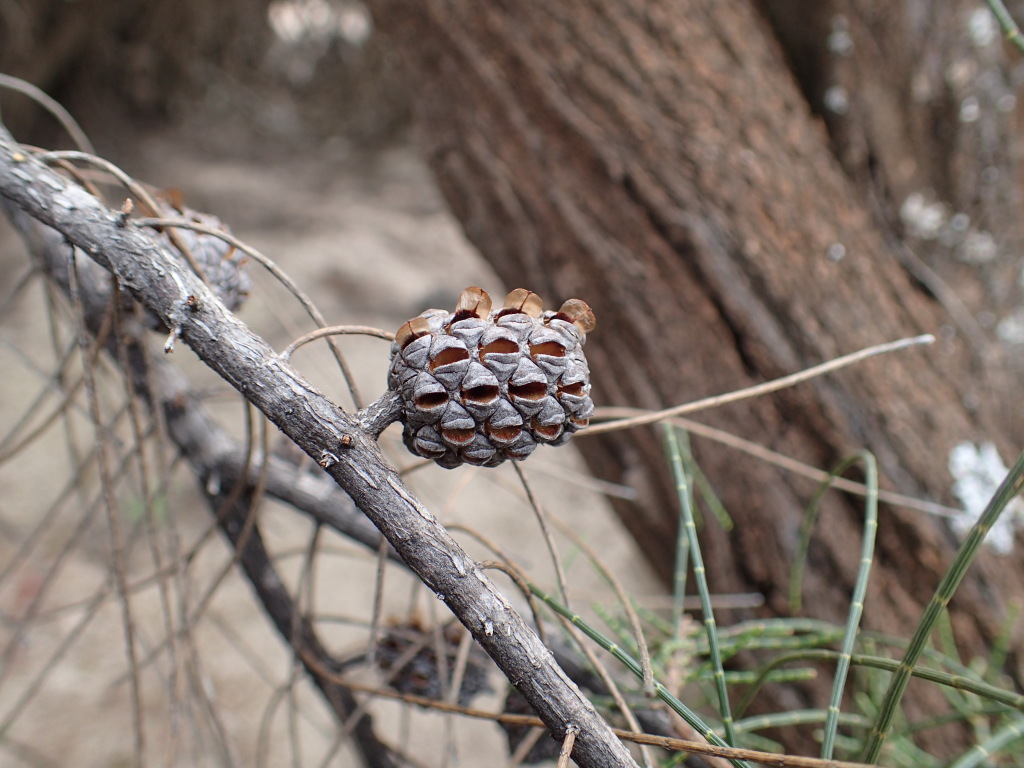Allocasuarina muelleriana subsp. muelleriana
Slaty SheoakDioecious or rarely monoecious shrub 0.5–3 m high; penultimate branchlets woody. Bark smooth. Branchlets ascending, to 12 cm long; internodes 3–11 mm long, 0.6–0.8 mm diam., usually angular, often waxy; furrows often pubescent, often with raised edges (at least when dry); ribs strongly angular, minutely serrate in profile, usually with white central ridge. Teeth 5–8, erect and appressed, 0.3–0.6 mm long, not overlapping, not withered. Male spikes often moniliform, 1–4 cm long, 6–8 whorls per cm; anther 0.5–1.0 mm long; bracteoles persistent. Cones cylindric, longer than broad, often with short sterile apex to 5 mm long, sessile or on peduncle usually up to 9 mm long; cone body 9–20(–25) mm long, 9–18 mm diam.; valves in several rows, hardly protruding far from cone body, obtuse to truncate, thick pyramidal protuberance shorter than bracteole body. Winged seeds (5–)6–9 mm long, usually black (rarely red-brown). Flowers all year.
LoM, MuM, Wim, GleP, VVP, VRiv, RobP, Gold, CVU, GGr, DunT. Also SA. Grows in scrub and heath, on rocky siliceous soils.
The 2 other subspecies are restricted to South Australia, and differ from subsp. muelleriana in having thicker branchlets (0.7–1.1 mm diam.), flat rib margins and usually larger cones.
The raised, usually lighter coloured, angular branchlet ridges, which are finely serrated, distinguish Allocasuarina muelleriana from all other Victorian species of Allocasuarina.
Entwisle, T.J. (1996). Casuarinaceae. In: Walsh, N.G.; Entwisle, T.J., Flora of Victoria Vol. 3, Dicotyledons Winteraceae to Myrtaceae, pp. 90–101. Inkata Press, Melbourne.
 Spinning
Spinning

